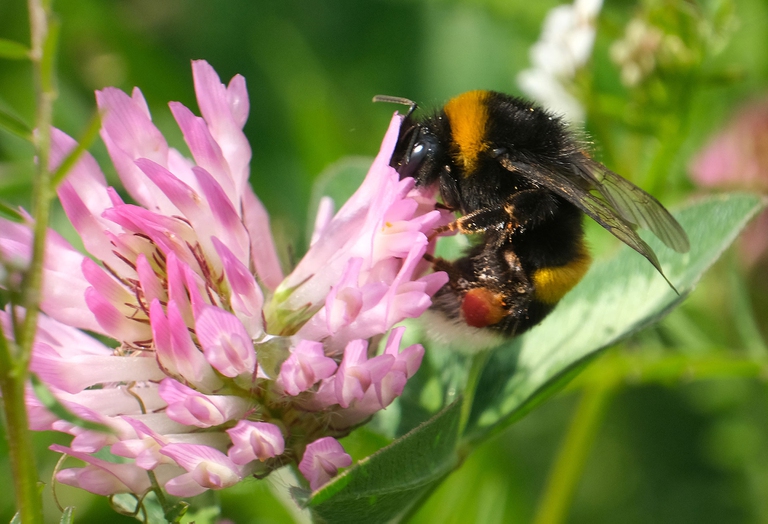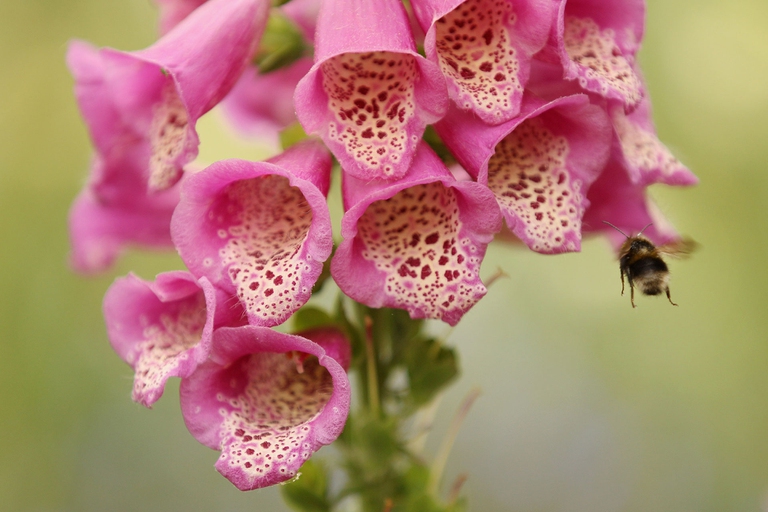
Canada’s wildfire season this year is impacting air quality way beyond the borders of the North American state, reaching as far as Europe.
Bumblebees can help plants flower more quickly. However, pesticides, parasites and climate change are putting this key species in serious danger.
Bumblebees are funny little animals. They look chubby, almost soft. We’re less afraid of them than bees because we know they rarely sting us. Bumblebees, part of the Bombus genus, are pollinating insects that perform a vital function, and essential crops we human beings feed on – from tomatoes and potatoes to strawberries and blueberries – depend on these insects’ activity.
A team of entomologists, i.e. scientists who study insects, from France and Switzerland have discovered an interesting fact. When pollen is scarce, bumblebees nibble plant leaves to accelerate the production of flowers. This trick is especially useful now that climate change has changed seasonal patterns, making life very difficult for these insects. Sometimes, early thawing causes plants to flower while bumblebees are still hibernating. By the time the soil heats up, which signals to the insects that it’s time to come out of hibernation, there are very few flowers left. Conversely, sometimes bumblebees emerge from hibernation before plants have begun to flower and are therefore at risk of starvation.
These problems are among the factors threatening these precious insects with extinction in Western countries. In addition to global warming, bumblebees are threatened by habitat loss due to the expansion of cultivated areas, the use of pesticides and the increasingly widespread presence of pathogens. These are the finding of a study conducted at the University of Wyoming in the United States, whose results were published in the scientific journal Ecosphere. Researchers spent the last three years exploring the causes of this species’ decline. Lusha Tronstad, a zoologist at the Wyoming Natural Diversity Database, states that the likelihood of encountering a bumblebee in the United States decreased by 93 per cent between 1998 and 2018.
The researchers’ goal is to convince the government to increase protections for bumblebees in accordance with the Endangered Species Act. Furthermore, according to Tronstad, there’s a lot that people with land can do too. For example, it’s important to choose plants and flowers that bloom in the summer and produce pollen; additionally, a water source has to be secured for the animals, as well as a nesting and overwintering habitat in the ground, where they usually nest. It’s also important to make sure not to work these areas until bumblebees come out of hibernation.
Greater commitment is also required on the part of the European Union according to the Court of Auditors, whose report finds evidence that Brussels hasn’t provided adequate protection to pollinating insects. Member states have been allowed to keep using dangerous pesticides and, in some cases, extraordinary licences have been granted for the use of the notorious neonicotinoid pesticides, banned in 2018. However, almost 80 per cent of European crops depend on these insects, whose annual contribution to agriculture in the EU is estimated to be worth 15 billion euros.
We can all help bees and bumblebees too by brightening our gardens and balconies with many colourful and, most importantly, pollen-producing flowers.
Siamo anche su WhatsApp. Segui il canale ufficiale LifeGate per restare aggiornata, aggiornato sulle ultime notizie e sulle nostre attività.
![]()
Quest'opera è distribuita con Licenza Creative Commons Attribuzione - Non commerciale - Non opere derivate 4.0 Internazionale.
Canada’s wildfire season this year is impacting air quality way beyond the borders of the North American state, reaching as far as Europe.
Two new studies have revealed that the retreat of the Thwaites Glacier is happening in a different, more complex way than previously understood.
A study of tissue samples from killer whales in Canada was the first to find a dangerous toxic chemical, known as 4NP, in the animals’ flesh.
The South African government is clamping down on the controversial multimillion-dollar lion-breeding industry, thanks to pressure from activists.
Switzerland’s glaciers are shrinking, with a new study finding that they have lost more than half their total volume since the early 1930s.
Santa Olalla, the last permanent lagoon in the park, has disappeared under the pressure of drought, overexploitation, and illegal wells.
Vulture populations in southern Asia experienced a 99% collapse and for a long time nobody knew why. Then, a historic discovery saved them.
The Indian government has pledged to reintroduce cheetahs, classified as a “vulnerable” species by the IUCN, into the wild. The animals will be transferred from Africa.
In Australia, more and more platypuses are getting caught in plastic waste. Efforts to protect this species need to be increased.









